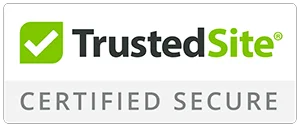Achieving permanent residency in the U.S. is a milestone for many immigrants seeking stability and opportunity. The path to permanent residency can be complex. The routes are tailored to professional backgrounds, family ties, and investment capabilities. Each year, thousands of people apply for Green Cards through employment, family sponsorship, investment, and humanitarian programs. However, backlogs, legal hurdles, and changing immigration policies make the process overwhelming.
Despite these obstacles, millions of immigrants successfully navigate the system and become lawful permanent residents. Understanding the key steps and strategies to expedite the process makes a great difference.
A Queens Immigration Attorney provides guidance on all you need to know. From self-petitioning options to the impact of your state of residence on processing times. Whether you are an entrepreneur, freelancer, or visa holder looking to transition to a Green Card, understanding the nuances of the process is essential for success.
Key Facts
- Nearly 105,000 I-485 applications were rejected last year due to incorrect filings.
- The processing time for Form I-485 (family-based adjustment of status) currently averages 9.3 months.
- Employment-based Form I-485 applications are processed faster, with an average wait time of 6.4 months.
- Family-sponsored I-130 petitions take approximately 14.3 months for U.S. citizens and up to 35 months for green card holders.
- In February 2024, USCIS reduced its case backlog by about 15%, processing nearly 11 million filings and completing 10 million cases.
- The wait time for Form N-400 (citizenship) is currently the fastest since 2016, averaging 5.5 months.
- PERM labor certification for employment-based green cards takes approximately 388 days for standard reviews and 493 days for audit reviews.
The Path to Permanent Residency with a Non-Traditional Career or Unconventional Work Experience
Freelancers, remote workers, and gig economy professionals often assume their chances of securing a Green Card are slim. When they are without a traditional employer. However, several employment-based immigration categories allow self-employed individuals and independent contractors to petition for permanent residency in the U.S. There are clear pathways for non-traditional professionals to secure a path to permanent residency. Provided they can present strong evidence of their qualifications, contributions, and financial stability.
Green Card for Freelancers
Freelancers and self-employed professionals can apply for permanent residency through several visa categories. Each catering to different qualifications and career achievements:
- EB-2 NIW (National Interest Waiver): Ideal for professionals with advanced degrees or exceptional abilities in business, arts, and sciences. Unlike traditional employer-sponsored Green Cards, this category allows self-petitioning. If the applicant’s work benefits the U.S. significantly.
- O-1 Visa to EB-1A: The O-1 visa is available for individuals with extraordinary abilities in science, education, business, and athletics. O-1 holders can transition to an EB-1A Green Card. This provides a fast-track path to permanent residency for highly accomplished professionals.
- EB-5 Investor Visa: Self-employed individuals who have built successful businesses abroad can invest a minimum of $800,000 in a Targeted Employment Area (TEA) or $1,050,000 in a U.S. business. The investment must create at least 10 full-time jobs for U.S. workers to qualify for a Green Card.
A freelancer’s income structure is important in determining eligibility for these pathways. The IRS categorizes freelancers as self-employed workers. This means they must pay 15.3% in self-employment tax (covering Social Security and Medicare). This serves as proof of ongoing economic contributions to the U.S. for immigration purposes.
How to Strengthen Your Application?
Since freelancers don’t have a traditional employer to verify their credentials, comprehensive documentation is crucial. USCIS evaluates applicants based on their economic impact, industry contributions, and ability to sustain themselves financially. Here’s what you need:
- Client Contracts & Invoices: Providing at least 3-5 long-term client contracts proves consistent income and demand for your services.
- Tax Returns Showing Earnings Stability: If you earn over $400 annually, you must file self-employment taxes. Applicants should provide at least 3 years of tax returns to establish income stability.
- Industry Recognition or Awards: A strong EB-2 NIW or EB-1A case includes professional certifications, media features, or industry leadership roles. All as evidence of extraordinary ability.
- Letters of Recommendation: For EB-2 NIW, securing letters from recognized industry experts stating the national importance of your work strengthens the case.
- Portfolio of Work & Impact Data: Freelancers in creative or technical fields should include case studies of their contributions to U.S. businesses. This includes graphic design, software development, or digital marketing.
Should You Consider an Immigration Attorney?
For non-traditional professionals, applying for a Green Card without employer sponsorship is possible. However, it requires a well-structured case. A skilled immigration attorney can:
- Ensure you apply under the right visa category.
- Help structure a strong EB-2 NIW petition with compelling evidence.
- Assist in obtaining expert recommendation letters.
- Optimize tax and financial documentation to meet USCIS requirements.
- Identify legal loopholes that can speed up processing.
Working with a skilled immigration attorney who understands self-employed Green Card applications can significantly improve approval chances.
How to Speed Up the Green Card Process
Many applicants overlook strategic legal options that can significantly accelerate their path to permanent residency. Some of these opportunities involve leveraging employment-based exemptions, fast-track processing programs, and high-priority categories recognized by USCIS.
Fast-Track Processing
The EB-2 National Interest Waiver (NIW) is one of the most effective ways to bypass the lengthy labor certification process, unlike standard employment-based visas that require employer sponsorship. The NIW allows applicants with exceptional ability or advanced degrees to self-petition if their work benefits the U.S. on a national scale.
- Premium Processing for Faster Results: USCIS offers a premium processing service for EB-2 NIW applications. This reduces the processing time to 15 calendar days instead of months or years. Qualifying applicants can significantly shorten their wait time by opting for this service.
- No Employer Sponsorship Required: Unlike traditional employment-based green cards, the NIW allows applicants to demonstrate their qualifications independently. This means no reliance on employer petitions or labor market tests.
- Strong Case Preparation is Key: To succeed, applicants must provide compelling evidence of their qualifications.
Priority Processing for Healthcare Workers and Researchers
Certain professions, particularly in healthcare, benefit from priority green card processing under Schedule A occupations. USCIS recognizes that nurses, physical therapists, and researchers in critical fields are essential to U.S. national interests.
- Direct Labor Certification Exemptions: Healthcare professionals can bypass the traditional labor certification process, reducing application wait times.
- Expedited Employment Authorization (Form I-765): For healthcare workers with pending Employment Authorization Document (EAD) applications for over 90 days. They can request expedited processing by calling the USCIS Contact Center.
When to File USCIS Expedite Requests
Applicants facing urgent circumstances may file an expedited request to USCIS to prioritize their green card application. Expedite requests are evaluated on a case-by-case basis, but strong justifications include:
- Severe Financial Loss: A job loss that would result in financial hardship may qualify an applicant for expedited review.
- Urgent Humanitarian Needs: Applicants with medical emergencies or critical caregiving responsibilities may be granted priority processing.
- National Interest or Government Need: Individuals whose work directly benefits public safety, national security, or government interests may be fast-tracked.
- USCIS Errors: If USCIS makes an administrative error that affects processing, applicants can request an expedited correction.
How to File:
- Applicants must contact USCIS via phone or their online account to submit an expedited request.
- Supporting evidence, such as employer letters or financial documents, should be uploaded promptly to strengthen the request.
- USCIS does not guarantee expedited approval, but applicants with compelling cases can significantly reduce their processing time.
EB-5 Rural Investment
For applicants with investment capital, the EB-5 Immigrant Investor Program offers an expedited path to a green card. Recent regulations have prioritized rural investments, making them the fastest EB-5 option.
- Lower Investment Threshold: Investments in rural Targeted Employment Areas (TEAs) require a minimum of $800,000.
- Priority Processing for Rural Projects: USCIS processes EB-5 petitions from rural TEAs ahead of others, leading to significantly shorter wait times.
- Concurrent Filing Options: Eligible applicants within the U.S. can file adjustment of status applications simultaneously with their EB-5 petition. Allowing them to remain legally in the U.S. while awaiting approval.
Can the State You Live in Affect Your Path to Permanent Residency?
Green card processing times vary significantly across different states due to several factors, including the efficiency of USCIS field offices, regional demand, and available resources. For those on the path to permanent residency, choosing the right state can make a significant difference. Recently, states such as Ohio and California have emerged as some of the fastest locations for green card processing. These areas benefit from well-managed USCIS offices with streamlined procedures and a history of quick processing times.
Why Some States Have Longer Backlogs Than Others
The disparity in green card processing times across states can be attributed to multiple factors Demand and caseload are among the most significant factors. States with higher immigrant populations, such as Texas, Minnesota, and Florida, tend to experience longer processing times due to an overwhelming number of applications. Cities such as Austin, Houston, Dallas, St. Paul, and Miami face particular delays. Often resulting in wait times exceeding 2 years.
Should You Consider Moving to a Different State to Speed Up Processing?
For applicants facing extended delays, relocating to a state with faster processing times could be a viable option. However, this decision should not be taken lightly. Relocating solely for green card processing may have financial and logistical implications moreover, although some states are experiencing shorter wait times. Processing speeds are subject to change based on shifts in USCIS workload and policy adjustments.
Advantages of Applying for a Green Card in Queens, New York
Relocating to a state with shorter processing times might seem like an attractive option. However, the decision isn’t purely about speed. Queens offers extensive legal support, a more experienced USCIS workforce, and a strong immigrant advocacy network. These are valuable assets for anyone on the path to permanent residency and seeking a smooth green card process.
Strong Legal and Community Support
New York is known for its immigrant-friendly policies and advocacy efforts. Many legal aid organizations offer pro bono services or affordable legal assistance to those going through the green card process. In the event of complications or delays, applicants have access to a robust legal system and elected officials. They are often willing to intervene for immigrants facing unreasonable processing times.
Higher Approval Rates in Some Categories
Processing may take longer. However, USCIS offices in Queens handle a large volume of family-based and employment-based green card applications. Some applicants may have a smoother experience due to the familiarity of adjudicating officers with these case types.
Diverse and Multilingual USCIS Staff
USCIS offices in the region have staff accustomed to handling diverse cases and applicants from various backgrounds due to Queens’ large immigrant population. This benefits those who need language support or cultural understanding in their interactions with USCIS officers.
Turn your NYC dreams into reality! Read our tips for starting fresh.
Take Your Next Step on the Path to Permanent Residency
Securing a Green Card is a gateway to stability, opportunity, and a future in the United States. The path to permanent residency requires careful planning, persistence, and guidance. A mistake or missed opportunity could set your case back months or even years. Working with a Queens immigration attorney can provide the clarity and confidence you need. Start by scheduling a free consultation today!





